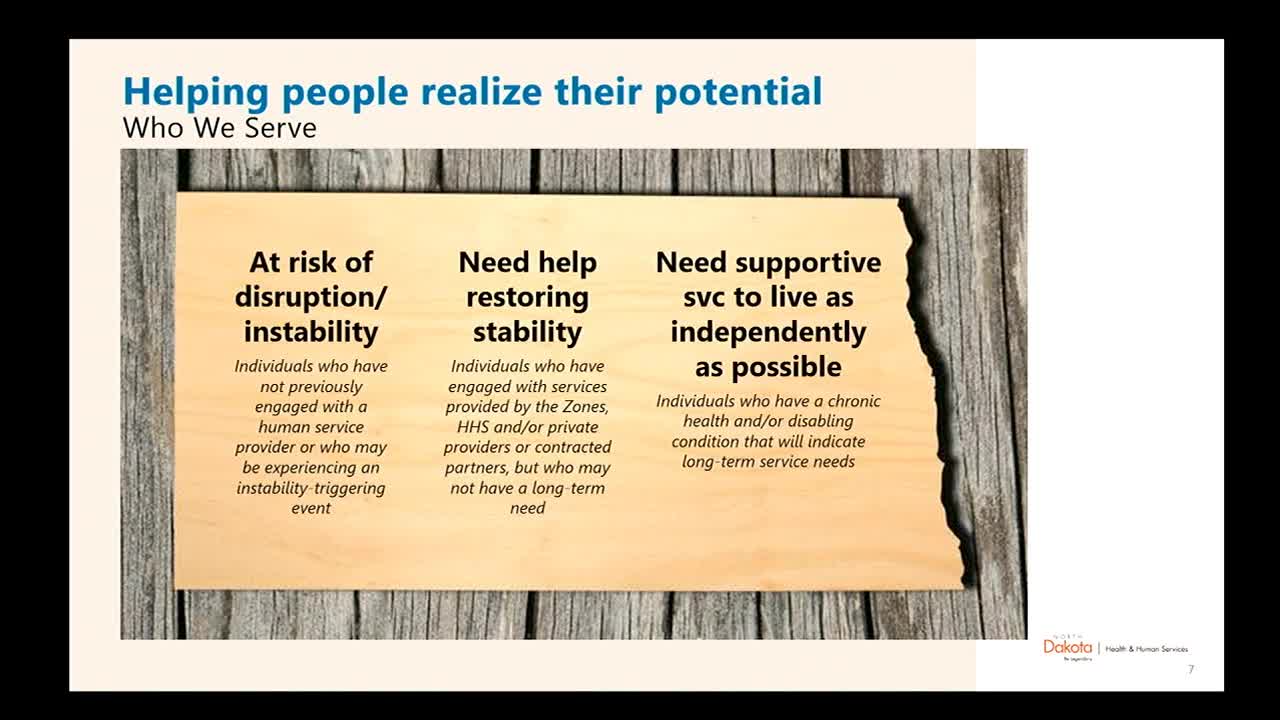HHS Discusses Strategies for Addressing Housing Instability and Support Services
September 04, 2025 | Legislative, North Dakota
This article was created by AI summarizing key points discussed. AI makes mistakes, so for full details and context, please refer to the video of the full meeting. Please report any errors so we can fix them. Report an error »

In a meeting that echoed with urgency and concern, members of the North Dakota Human Services Committee gathered on September 4, 2025, to address pressing issues surrounding housing stability and the well-being of vulnerable populations. The atmosphere was charged as officials discussed the multifaceted challenges faced by individuals at risk of homelessness, emphasizing the need for targeted interventions.
The discussion began with a clear outline of the populations served by the Health and Human Services (HHS) agency. Officials highlighted three distinct groups: those facing short-term crises, individuals with longer-term needs, and those requiring ongoing support due to chronic health conditions or disabilities. This framework set the stage for a deeper exploration of the factors contributing to housing instability.
As the conversation unfolded, committee members were presented with stark statistics illustrating the economic realities many North Dakotans face. It was noted that individuals earning between 40% and 50% of the state median income often struggle with housing costs, a situation exacerbated by rising rents and stagnant wages. The committee was urged to consider how these economic pressures create a ripple effect, threatening not only housing stability but also overall well-being.
A poignant moment came when officials shared insights into the connection between economic health, behavioral health, and physical health. They stressed that instability in any one of these areas could lead to a tipping point, resulting in crises that could have been avoided with proper support. The importance of community and belonging was underscored, as these elements are crucial for weathering life's storms.
The committee also examined data on housing affordability, revealing that many households are burdened by costs that exceed the recommended 30% of their income. This financial strain is particularly acute for those in lower-income brackets, where nearly 90% of individuals earning less than 50% of the state median income are likely to be cost-burdened. The discussion highlighted the competitive nature of the housing market, where limited choices for lower-income families make it increasingly difficult to secure affordable housing.
As the meeting progressed, the committee members were encouraged to reflect on the broader implications of these discussions. The insights shared painted a vivid picture of the challenges faced by many North Dakotans, urging policymakers to prioritize solutions that foster stability and prevent crises before they escalate.
In conclusion, the Human Services Committee's meeting served as a critical reminder of the interconnectedness of economic and social factors in shaping the lives of individuals and families across the state. As they moved forward, the committee's commitment to addressing these challenges will be essential in building a more stable and supportive community for all.
The discussion began with a clear outline of the populations served by the Health and Human Services (HHS) agency. Officials highlighted three distinct groups: those facing short-term crises, individuals with longer-term needs, and those requiring ongoing support due to chronic health conditions or disabilities. This framework set the stage for a deeper exploration of the factors contributing to housing instability.
As the conversation unfolded, committee members were presented with stark statistics illustrating the economic realities many North Dakotans face. It was noted that individuals earning between 40% and 50% of the state median income often struggle with housing costs, a situation exacerbated by rising rents and stagnant wages. The committee was urged to consider how these economic pressures create a ripple effect, threatening not only housing stability but also overall well-being.
A poignant moment came when officials shared insights into the connection between economic health, behavioral health, and physical health. They stressed that instability in any one of these areas could lead to a tipping point, resulting in crises that could have been avoided with proper support. The importance of community and belonging was underscored, as these elements are crucial for weathering life's storms.
The committee also examined data on housing affordability, revealing that many households are burdened by costs that exceed the recommended 30% of their income. This financial strain is particularly acute for those in lower-income brackets, where nearly 90% of individuals earning less than 50% of the state median income are likely to be cost-burdened. The discussion highlighted the competitive nature of the housing market, where limited choices for lower-income families make it increasingly difficult to secure affordable housing.
As the meeting progressed, the committee members were encouraged to reflect on the broader implications of these discussions. The insights shared painted a vivid picture of the challenges faced by many North Dakotans, urging policymakers to prioritize solutions that foster stability and prevent crises before they escalate.
In conclusion, the Human Services Committee's meeting served as a critical reminder of the interconnectedness of economic and social factors in shaping the lives of individuals and families across the state. As they moved forward, the committee's commitment to addressing these challenges will be essential in building a more stable and supportive community for all.
View full meeting
This article is based on a recent meeting—watch the full video and explore the complete transcript for deeper insights into the discussion.
View full meeting
